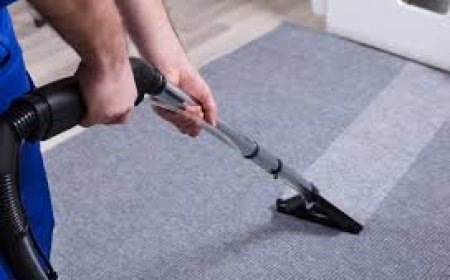Aramid Fiber Manufacturing Plant Report 2025 | Machinery Requirements and Business Plan
Aramid fibers are a category of high-performance synthetic fibers renowned for their exceptional strength, heat resistance, and durability in extreme conditions.
IMARC Group’s report, “Aramid Fiber Manufacturing Plant Project Report 2025: Industry Trends, Plant Setup, Machinery, Raw Materials, Investment Opportunities, Cost and Revenue,” offers a comprehensive guide for establishing a manufacturing plant. The aramid fiber manufacturing plant cost report offers insights into the manufacturing process, financials, capital investment, expenses, ROI, and more for informed business decisions.
Aramid Fiber Manufacturing Plant Project Report Summary: -
- Comprehensive guide for setting up a aramid fiber manufacturing plant.
- Covers market trends and industry outlook for 2025.
- Detailed project setup, including unit operations and processes.
- Raw material and utility requirements.
- Infrastructure and machinery specifications.
- Workforce and staffing requirements.
- Packaging and transportation details.
- Financial aspects: investment opportunities, cost analysis, and revenue projections.
In addition to covering operational aspects, the report offers detailed insights into the aramid fiber manufacturing plant process and project economics.
- Detailed insights into the aramid fiber manufacturing plant
- In-depth project economics and financial metrics.
- Covers capital investments and project funding.
- Analysis of operating expenses and income projections.
- Breakdown of fixed and variable costs, direct and indirect expenses.
- Evaluation of ROI (Return on Investment) and NPV (Net Present Value).
- Profit and Loss account analysis.
- Comprehensive financial analysis for decision-making.
- Provides a roadmap for successfully establishing a aramid fiber manufacturing
Request for a Sample Report: https://www.imarcgroup.com/aramid-fiber-manufacturing-plant-project-report/requestsample
What is Aramid Fiber?
Aramid fibers are a category of high-performance synthetic fibers renowned for their exceptional strength, heat resistance, and durability in extreme conditions. These fibers exhibit outstanding resistance to abrasion, chemicals, and high temperatures, making them indispensable across a broad spectrum of industries. Produced through the dry-jet wet spinning process, aramid fibers are available in various forms, including para-aramid and meta-aramid, each tailored to specific applications. Their versatility is showcased in critical industries such as aerospace, military, automotive, electrical, and construction, where their lightweight nature, flexibility, and resilience under heat and mechanical stress provide significant advantages. From ballistic body armor and fireproof clothing to high-performance tires, brake pads, and optical fiber cables, aramid fibers contribute to enhanced safety, durability, and environmental resistance. Their ability to withstand organic solvents further adds to their appeal in demanding environments, solidifying their status as a go-to material for advanced engineering solutions.
Market Trends and Drivers:
The market for aramid fibers is experiencing robust growth, driven by the rising need for lightweight yet highly durable materials, particularly in the aerospace and automotive sectors, where they contribute to improved fuel efficiency and overall performance. In the defense and industrial sectors, the demand for protective gear that offers ballistic and heat resistance is fueling adoption, as aramid fibers meet stringent safety standards. The expanding telecommunications industry also plays a role in this growth, as aramid fibers reinforce optical fiber cables to enhance durability and performance. Additionally, the construction sector benefits from aramid fibers' ability to reinforce building materials, while the renewable energy industry increasingly utilizes them in wind turbine blade manufacturing. Innovations in material science are propelling the development of next-generation aramid fibers with even greater performance metrics and environmental resistance, broadening their applications and driving further market expansion.
Key Insights Covered in the Aramid Fiber Manufacturing Plant Report
Market Coverage:
- Market Trends: Analysis of current and emerging trends in the aramid fiber market.
- Market Segmentation: Breakdown of the market by different segments.
- Regional Analysis: Distribution and performance of the market across various regions.
- Price Analysis: Evaluation of pricing trends for aramid fiber.
- Impact of COVID-19: Examination of the effects of the COVID-19 pandemic on the aramid fiber market.
- Market Forecast: Outlook and projections for the aramid fiber industry.
Key Aspects Required for Setting Up a Aramid Fiber Plant
Detailed Process Flow:
- Product Overview: Comprehensive description of the aramid fiber product and its characteristics.
- Unit Operations Involved: Step-by-step breakdown of the various operations in the production process.
- Mass Balance and Raw Material Requirements: Calculations for material inputs and outputs, along with required quantities of raw materials.
- Quality Assurance Criteria: Standards and procedures to ensure the quality of the final product.
- Technical Tests: Essential tests and evaluations to maintain product consistency and compliance.
Project Details, Requirements, and Costs Involved
- Land, Location, and Site Development: Assessment of land requirements, optimal location selection, and site development costs.
- Plant Layout: Design and layout planning for efficient plant operations.
- Machinery Requirements and Costs: Identification of machinery needed, along with the associated costs.
- Raw Material Requirements and Costs: Determination of the types and quantities of raw materials required and their costs.
- Packaging Requirements and Costs: Specifications for packaging materials and equipment, including associated expenses.
- Transportation Requirements and Costs: Logistics planning and cost estimation for the transportation of raw materials and finished products.
- Utility Requirements and Costs: Analysis of utility needs (such as water, electricity, and fuel) and their associated costs.
- Human Resource Requirements and Costs: Workforce planning, including staffing needs, roles, and costs for labor and management.
Project Economics
- Capital Investments: Initial costs required for setting up the aramid fiber manufacturing plant, including land, equipment, and infrastructure.
- Operating Costs: Ongoing expenses for running the plant, such as raw materials, labor, utilities, and maintenance.
- Expenditure Projections: Detailed forecasts of all costs over the short and long term.
- Revenue Projections: Expected income generated from the sale of aramid fiber and by-products.
- Taxation and Depreciation: Analysis of tax obligations, incentives, and asset depreciation over time.
- Profit Projections: Estimated profitability based on costs, revenues, and market conditions.
- Financial Analysis: Comprehensive evaluation of the plant’s financial viability, including cash flow analysis, return on investment (ROI), and break-even point.
Ask Analyst for Customization: https://www.imarcgroup.com/request?type=report&id=15621&flag=C
Customization Options Available:
- Plant Location: Selection of optimal location for the plant.
- Plant Capacity: Customization based on desired production capacity.
- Machinery: Choice between automatic, semi-automatic, or manual machinery.
- List of Machinery Providers: Identification of suitable machinery suppliers.
Key Questions Addressed in This Report:
- How has the aramid fiber market performed so far and how will it perform in the coming years?
- What is the market segmentation of the global aramid fiber market?
- What is the regional breakup of the global aramid fiber market?
- What are the price trends of various feedstocks in the aramid fiber industry?
- What is the structure of the aramid fiber industry and who are the key players?
- What are the various unit operations involved in an aramid fiber manufacturing plant?
- What is the total size of land required for setting up an aramid fiber manufacturing plant?
- What is the layout of an aramid fiber manufacturing plant?
- What are the machinery requirements for setting up an aramid fiber manufacturing plant?
- What are the raw material requirements for setting up an aramid fiber manufacturing plant?
- And more...
How IMARC Can Help?
IMARC Group is a global management consulting firm that helps the world’s most ambitious changemakers to create a lasting impact. The company provide a comprehensive suite of market entry and expansion services. IMARC offerings include thorough market assessment, feasibility studies, company incorporation assistance, factory setup support, regulatory approvals and licensing navigation, branding, marketing and sales strategies, competitive landscape and benchmarking analyses, pricing and cost research, and procurement research.
Services:
- Plant Setup
- Factoring Auditing
- Regulatory Approvals, and Licensing
- Company Incorporation
- Incubation Services
- Recruitment Services
- Marketing and Sales
Contact Us:
IMARC Group
134 N 4th St. Brooklyn, NY 11249, USA
Email: sales@imarcgroup.com
Tel No:(D) +91 120 433 0800
United States: +1-631-791-1145
What's Your Reaction?
 Like
0
Like
0
 Dislike
0
Dislike
0
 Love
0
Love
0
 Funny
0
Funny
0
 Angry
0
Angry
0
 Sad
0
Sad
0
 Wow
0
Wow
0









































